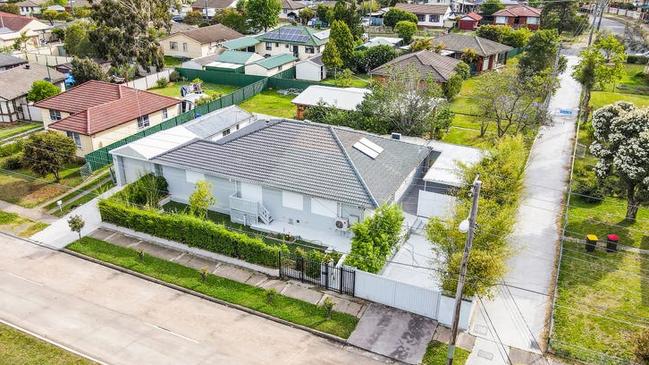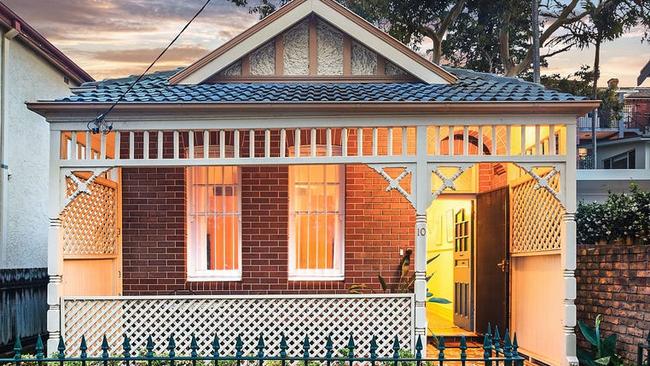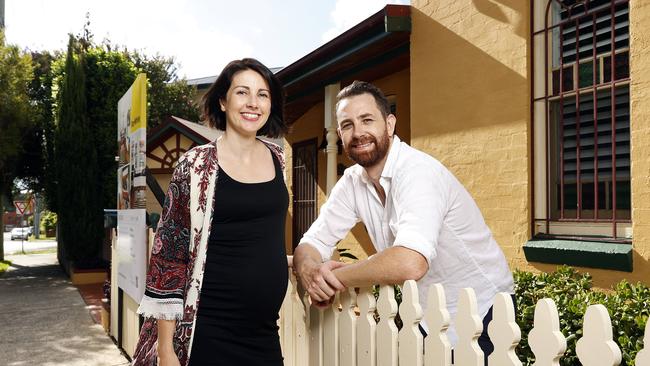How much you need to buy a home in NSW: the income you must earn to afford property in each suburb revealed
Home buyers will need to earn more than $300k a year to afford houses in close to a quarter of Sydney suburbs. Find out how much you need to earn to buy in your intended area
Property
Don't miss out on the headlines from Property. Followed categories will be added to My News.
Home seekers will need to earn nearly $200,000 a year to be able to afford the typical Sydney house following another explosion in property prices last year.
With prices rising by an average of nearly 30 per cent – the fastest annual increase since the 1980s – much of the market has become inaccessible for even middle-income earners, new research showed.
The typical house in more than a quarter of the suburbs with available data were only affordable for households who earned more than $300,000 a year, the study revealed.
There were also 49 suburbs where the average house was only affordable for those who earned more than $500,000.
The Finder.com.au analysis of prices and loan data measured how much you’d need to earn to be able to purchase the typical house or unit in every Sydney suburb.

It assumed the buyer purchased at the median price, was given an average loan rate and wanted to avoid “mortgage stress” – defined as spending more than a third of their income on repayments.
The data showed that buyers needed a household income of at least $196,000 annually to afford a house priced at the Greater Sydney median of $1.375 million.
And to get the loan, they’d also need about $335,000 in the bank to fund a 20 per cent deposit and stamp duty.
Tax office and Australian Bureau of Statistics data varied on exactly what constituted the “average” Sydney income, but it was in the realm of $100,000-$125,000 a year for a household.
CoreLogic research director Tim Lawless said skyrocketing prices and meagre rises in wages meant housing affordability in Sydney and across the country was the worst on record.
“The gap between income and prices has never been this large,” he said. “It’s a cumulative phenomenon that’s getting worse over time.”
Finder.com.au money expert Sarah Megginson said many new entrants into the housing market may have bought beyond their means.
“Interest rates are at an all-time low, but they’ll need to rise at some point,” she said. “Unfortunately, this means some Aussies are at risk of defaulting on their home loans.”
Buying a house in the city’s cheapest suburbs – including Wilmot, Whalan and Blackett in the Mount Druitt region of Western Sydney – required minimum earnings of nearly $100,000 a year.
Getting into Sydney’s cheapest unit market, the suburb of Carramar in the southwest, required annual income of $56,000 a year.
Units in only two other suburbs were accessible for those earning under $60,000 – Mount Druitt and Warwick Farm, near Liverpool.

Mr Lawless said Sydney’s affordability problems were pushing more would-be buyers out of the market.
“It’s the transactional costs that are the hardest,” Mr Lawless said, adding that the biggest challenge for most buyers was coming up with the high sums needed for deposits and stamp duty.
Mortgage serviceability was also an issue – despite rates being at record lows – because the high prices buyers had to pay left them more financially exposed, Mr Lawless said.
“We are now more sensitive to the cost of debt. Small increases in rates will have a sharper impact on household behaviours,” he said.
Mr Lawless said Australian households’ high appetite for debt was part of the reason growth in prices eclipsed wage rises for so long.
Another factor was that high migration over many years prevented the kind of labour shortages that would have driven up wages, while also pushing up demand for housing.

“Demand (for housing) has outweighed supply across Australia for a long time and prices rose at a strong rate over time,” Mr Lawless said.
“With wages, there was not the same imbalance between demand and supply, so there was not the same growth.
“It was not direct policy, but when there were skills shortages, they would increase 457 visas and any upwards pressure on wages was dampened.”
Stephanie and Mike Jones are looking for a new home after listing their Arncliffe house on Hirst St up for auction on February 19 and said their search was proving challenging.
“Prices have gone crazy,” Ms Jones said.
“I feel like in Sydney you’ll never have enough money to get what you want. You have to buy for the short-term and then hope in a few years you can move to something bigger.
“It would be even tougher to be a first homebuyer. The market keeps going up so much, it would be daunting. At least we can sell our house and know how much we can spend on (the next one).”
Their agent Nicholas Economos of Ray White Hurstville said the couple’s home was only recently listed and was already getting a big response from buyers.
“A lot of people got priced out of the east, the inner west last year,” he said. “They’re still looking for a home and anything that’s quality is selling quickly.”



